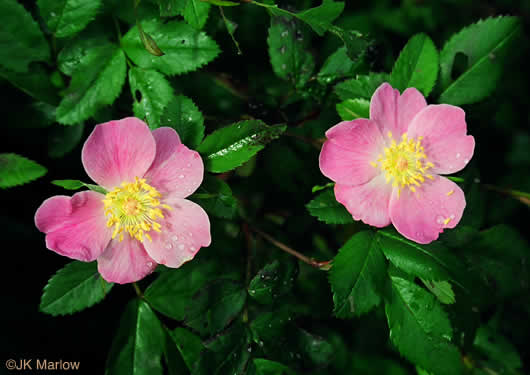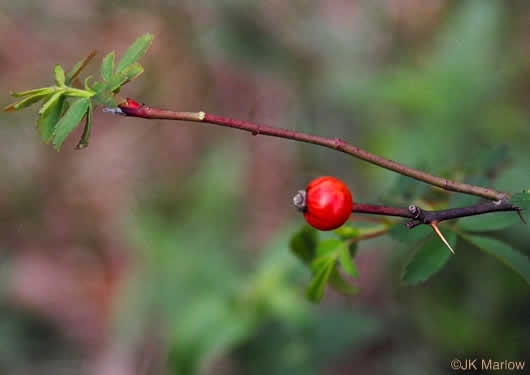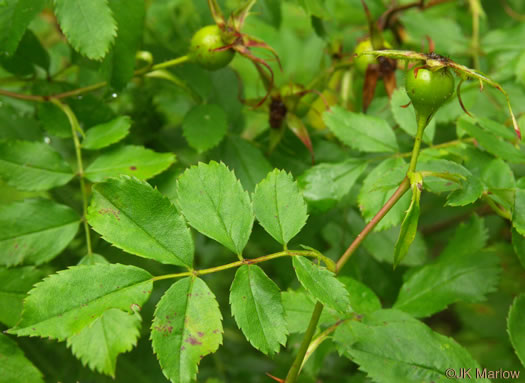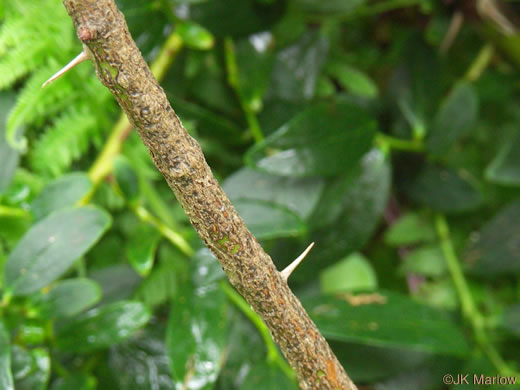Rosaceae
Carolina rose
Rosa carolina
Synonyms
Rosa serrulata
Rosa lyoni
Plant Type
Shrub (less than 10 ft)
Life Cycle
Perennial
Typical Size
0.5-5 ft. tall
1-5 ft. wide
Tolerant of
Occasional Flooding
Inolerant of
Poorly Drained Soil
Propagation
By seed, By cutting, By division
Plant Propagation Notes
Softwood cuttings in early spring. Seeds require 90 days of cold moist stratification.
Plant Planting Notes
Provide up to 5 ft of spacing.
Plants/Diseases
Sometimes rose or Japanese beetles, thrips, aphids, and spider mites can be an issue.
Wildlife Benefits
Nectar/pollen source for pollinating insects, Host plant for butterfly larvae, Fruit/seeds for birds
Leaves
Leaves alternate, compound with ovate leaflets and serrate margins.
Flowers
Flowers pink to white with 4-5 petals, fragrant.
Fruit
Hip
Bark
Prickles are straight and often in opposite pairs.
Toxicity
No known toxicity
Edibility
Hips can be made into tea or jelly.
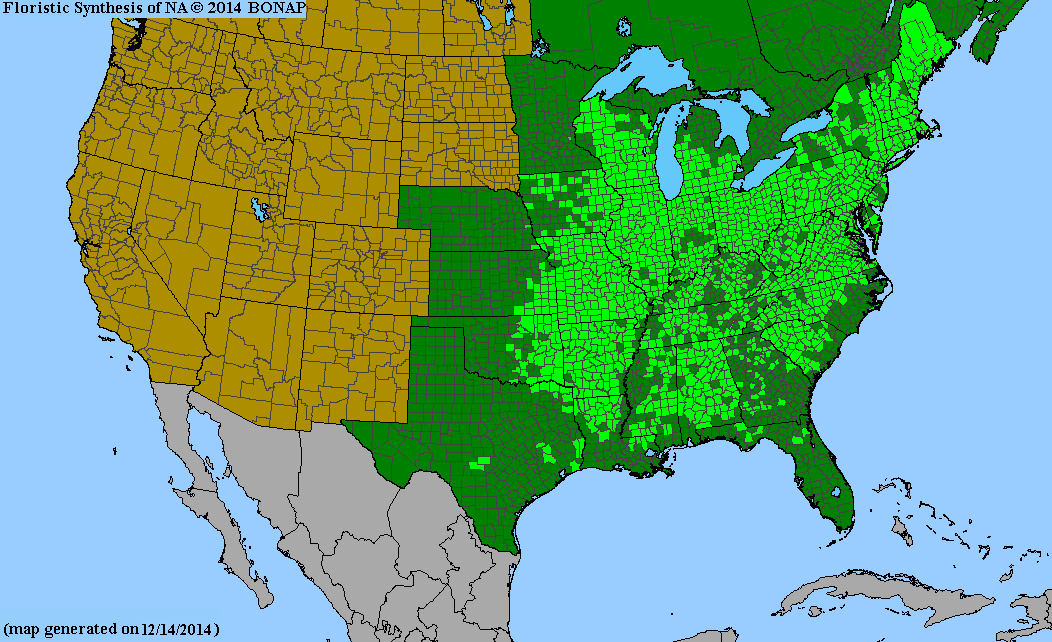
USDA Hardiness Zones
4, 5, 6, 7, 8, 9
Light Exposure
Full Sun, Part Sun/Shade
Soil Moisture
Medium, Moist
Soil Drainage
Well-drained
Soil pH
Acidic (less than 6.0), Neutral (6.0-8.0)
Native in South Carolina?
Yes
Plant Native Habitat
Pastures, roadsides, woodlands, and upland forests.
Global Conservation Status (NatureServe)
Secure (G5)
Federal Conservation Status (USFWS)
Not Listed
Distribution Notes
Common throughout South Carolina.
Subspecies
Rosa carolina ssp. carolina
Rosa carolina ssp. subserrulata

